https://www.youtube.com/watch?v=49Izh9ZnBog
Rubik's Cube - The Art of Pseudoslotting (F2L)

When most people get two bad F to all cases in a row , they just solve one of them and then solve the other one .
That was a lot of moves .
And instead why don't you just do this pseudo slotting is a method of solving multiple F two pairs at once .
Many top cubers are using this nowadays , most notably , Timon Klosinski who has the world record average .
So are most cubers at the point in their solves where they can use pseudo slotting and make it worth it ?
Uh not necessarily .
But is it really , really cool ?

Hell yeah , pseudo slotting is an advanced technique but it is the same thing as regular F two L just with two different slots at once in normal F two L , you find a corner and edge piece with the same colors on them and then you pair them up in a way where you can insert them into the same colored slot with pseudo slotting , you find a corner and an edge , but they don't have to be all the same colors and then you'll insert them into two different slots at once by joining them .
So now we pair them and then insert into both slots and undo that move .
Once you understand that and you know how to do F two L , then you can just try doing pseudo slotting on your cube like you just start finding pairs and then try to make sure that the corner goes into its corner slots and the edge goes into its edge slot and then you can just solve it like that if you try and continue , like if I try to use this one and this one , I can pair them up like this .
And then I just need this corner slot underneath it and solving into that edge spot .

If you actually do that , I would call that pseudo F two L .
And it's not something you should necessarily strive for .
But it is an interesting practice technique to get down the recognition of pseudo slotting recognition for pseudo slotting can be tricky .
So let's say we're on our last two F two L slots and this one is a corner solved .
This one has an edge solved , which means you can put these two together for a pseudo slot .
This sort of situation where these two are solved doesn't happen that often .
And there are to set up pseudo slots that aren't just hope for a lucky case .
I'll talk about those later .
But first , we have to talk about how to recognize pseudo slotting cases .
So we have the corner and the edge up here and the colors don't really match .
So it seems like what we actually want is something like this where the colors do match the problem though is that is incorrect .
And if you tried and insert this as a pseudo slot , you would just get a flipped edge .
Meanwhile , the one that looks like it's wrong and mismatching if you solve it as a pair will just solve the case .
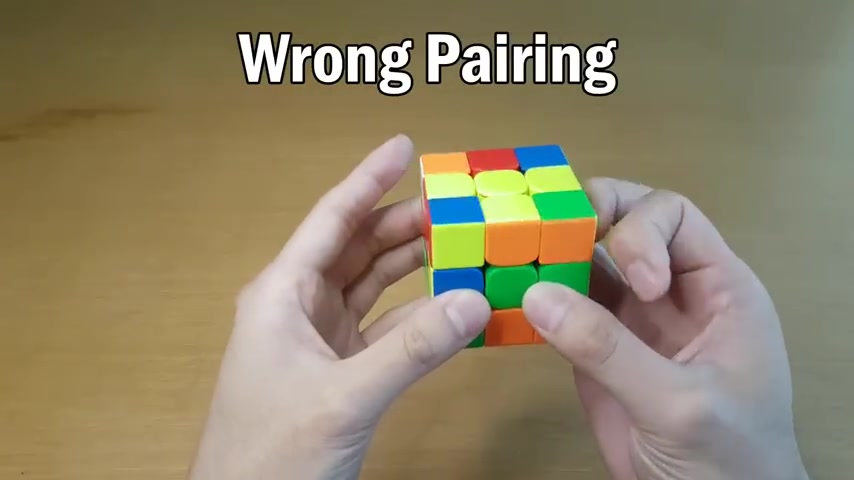
There are two methods of recognition for pseudo slotting .
The first one is wrong pairing and the second one is eo or edge orientation , wrong pairing is what I just showed earlier .
It's when you have a case that looks like it's right .
That's not right .
You want the case that looks like it's wrong .
So instead what you're going to do is have the split up case like that .
And when you set it up , this way you have this green not matching the top , instead it matches the back , usually that's wrong .
But in this case for pseudo slotting , that is actually correct .
So the idea for wrong pairing is you use your normal F two L recognition techniques except you try to pair them up wrong , except when it doesn't work .
See wrong pairing is the way that most people first think of to try and recognize pseudo slots , but it is actually the wrong method , don't do it .
The reason I even bring up wrong pairing is because I know people do this when they first try to pseudo slot .
And I am telling you here that this is not the method you want to use to recognize because it is slow and you will mess up very often .
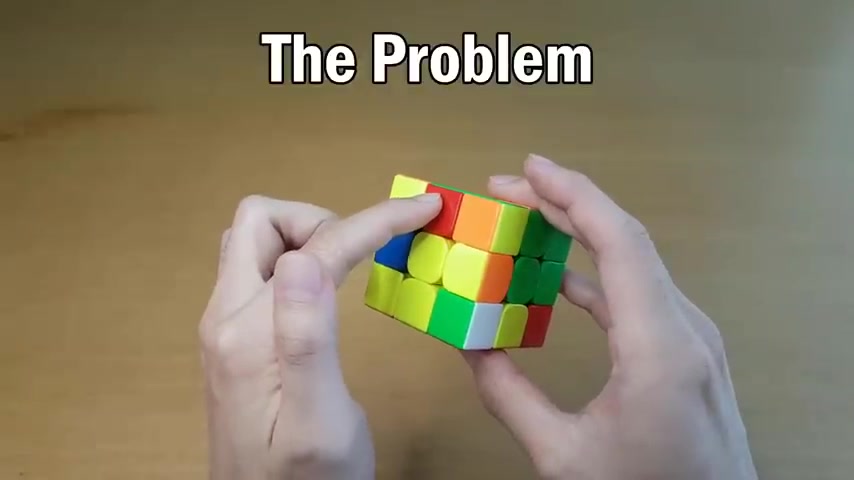
In general .
You want to use EO or edge orientation .
EO is a great F two L recognition technique that is unrelated to pseudo slotting .
So if you learn it , it will make all your F two cases faster , you will get better at recognition and look ahead and it is just something that you definitely should learn .
And once you learn pseudo slotting , you will not need to learn any new recognition technique , you will just use the same technique for everything .
So how do people normally recognize ?
Well , usually for F two L pairs , what you do is you find one color on the corner and match it to one color on the edge .
You are comparing corner sticker to edge sticker .
And so what often happens is people have trouble recognizing this case because you see that this is white here and then you see the edge here and oh OK .
It's right on top .
Wait , where was the red on the corner ?
OK .
It was here .
And you see how you're looking back and forth between them .
That is what's causing you to pause on this case with EO you never have to compare between the corner and the edge .

So how EO works is you figure out the orientation of the edge is it a good edge or a bad edge .
And what that means is a good edge can be solved into where it belongs using only Ru and L moves .
But if I do a Q rotation , this is now a bad edge .
And if I try to solve it into its spot using Rul moves , it is flipped .
How I know if an edge is good is I see if the side color matches is one of the side centers , then it's good .
If it does not like if I do a cube rotation , this green no longer matches one of the side centers , it is now a bad edge and I need to do a Q rotation in order to fix that .
The other thing you can do is see if the top color matches the front or back center .
You can use either technique , side matches side or top matches front back to know if it's a good edge .
So any time you have a bad edge , you can just rotate and make it a good edge .
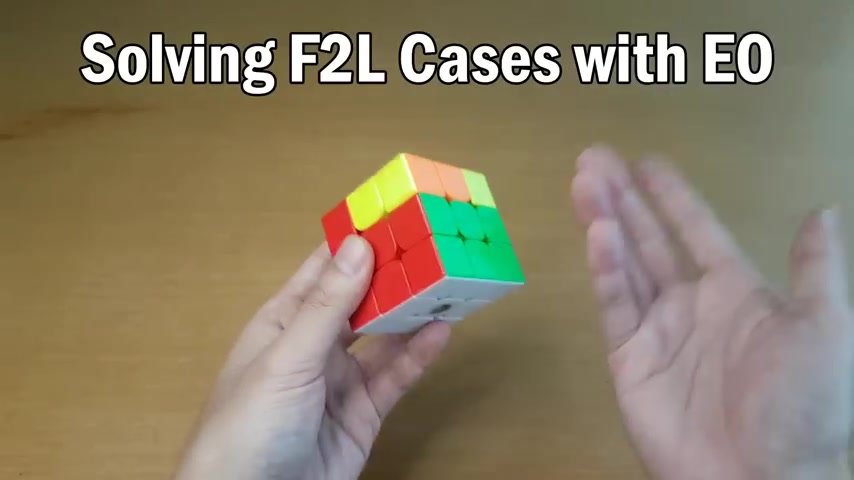
And then you can try and solve this F two L case by just seeing the corner is and knowing where the edge is and then you can just solve it like that assuming it is the case that doesn't need you to rotate .
Now what if instead of this case , we had the flipped edge version which is like this .
Well , in this case , you would first see the edge and notice it is a bad edge .
So you will not even try this because you first need to do a Q rotation , then you have to solve this case rotation list , which is not like this .
We're not using F moves .
We are instead going to solve it like this by pairing them up and then insert that is the idea behind the eo recognition technique .
You should definitely learn it .
It means less information actually goes through your head as you solve , you can check out this video here where I talk all about the advantages , more examples in case you need to learn more .
OK .
Now we've covered the EO recognition method and you will use this for pseudo slots .
All right .
Now let's read , get back to pseudo slots .
So how exactly are we going to use this technique in ?
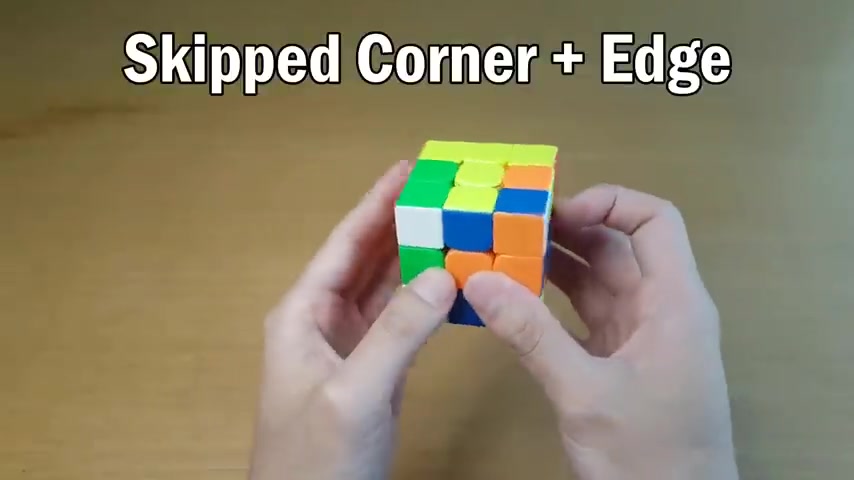
So the time that you should definitely use pseudo slots is when you have a corner and edge just already solved .
And that means you basically skipped a corner edge pair , you should pair up the two remaining and figure out which pieces go there .
So this is the orange , blue corner and this is the orange green edge , these two and then you're gonna rotate in a way that it's a good edge .
So this would make it a bad edge , this would make it a good edge and then just try to solve this in the rotation this way into the slot .
And then there you go , you solve two F two pairs at once .
You're doing pseudo slotting , you're doing multi slotting .
That's so cool .
But that sort of situation where a corner and edge just solve themselves and set up perfectly for you to do pseudo slotting .
That is quite rare .
So you shouldn't rely on that happening .
And if you do , you will almost never see a pseudo slotting case .
So you will not practice it and it will actually slow you down .
So you should definitely force pseudo slotting to happen sometimes .
And I'll show you the best cases where you can save the most moves .
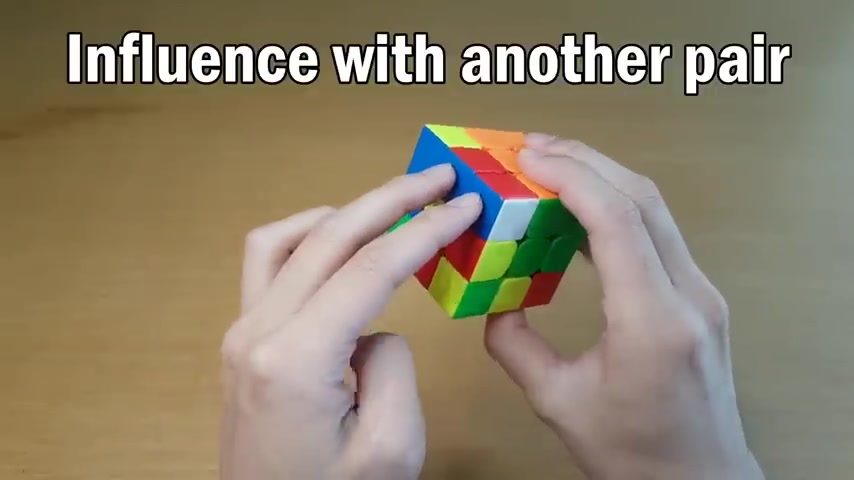
This is the first F 12 case we will be looking at .
Now , the two ways we generally solve this either just directly solve it , which is like take it out , solve whatever case you get , it's like 11 moves not great or when you pair up the next case , you can actually take it out during that step .
So you're kind of overlapping steps and that can be good , but it's not always something you can do .
So instead we're going to do pseudo slotting to solve this .
And that's generally a great way to solve it .
Since this edge is solved , we don't need to solve this corner , we can solve the other corner .
So we're gonna take this corner and solve it .
Now we have a corner and edge pair solved and we need to solve this corner edge pair .
Now this corner edge pair is usually going to be great because this corner already being in the slot used to be a bad thing when it was under a solved edge .
But if you move it under not a solved edge , this is typically a great case .
So we're just gonna take these two and solve it .

Uh I'll show the normal method you solve it , which is like this and then uh make sure it's a good edge , then just solve it like that .
And then undo the D move .
There are some details you have to worry about .
You can't just do it the same way every time because let's say you see this case here and this case here and you're facing blue , well , you could just solve the corner like that , but you shouldn't do that because that gives you a flipped edge .
So instead of what we're gonna do is just rotate and insert this one like this .
So the edge stays on top , then you can do this pseudo slotting as usual put the corner here and solve it with the edge .
Now , if you have the corner on top , you can insert it in about seven moves instead of about four moves .
So this is one example and you set up the same pseudo slotting case in the end .
So it does work out but it is slightly less worth it .
And about equally worth it would just be the keyhole and solve the corner and then just solve whatever other case you get for the last 12 slots .
Uh This sort of detail , it's like not necessarily worth thinking about .

You could just pseudos it every time and it's a , the same , I'm just going to say here that if you want to do pseudo slotting , this is the type of thing you will have to think about on what you're going to do with these cases because it's not always clear cut , what you should do .
It depends a lot on the details of where every piece is .
Basically , I don't want to talk about it .
Here is another case that you should probably solve with pseudos lott .
When you have the flipped edge case , exact same idea as the twisted corner case , this corner is solved .
So we'll solve the edge of the other slot .
So here we can solve this edge like that .
No , this is gonna be a terrible final case .
So instead remember to think about the details and to solve this edge in a way that keeps this corner on top .
So we're gonna do it like this .
And now we have this as our final case .
It is not the best case , but it is a lot better than dealing with the flipped edge plus an average F 12 case for whatever this happened to end up being .
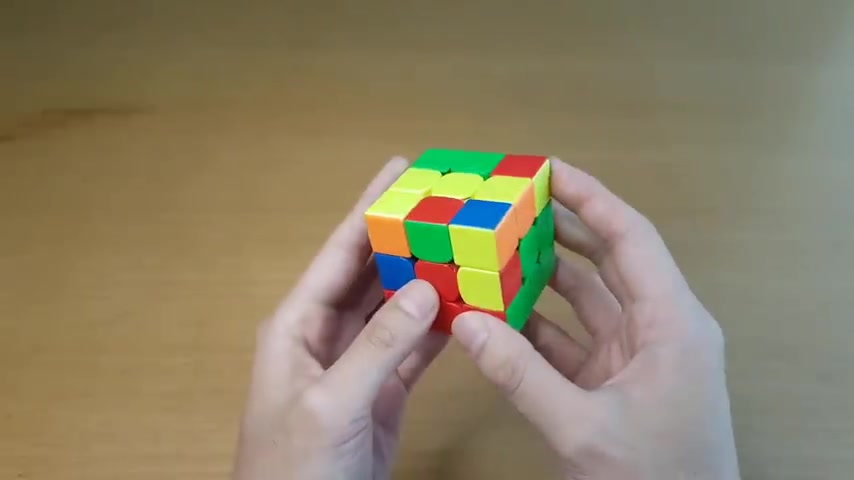
So we can do this , pair them up and insert and then D I also really like all this pseudo slotting stuff because it takes away panic situations like this where you feel like you should be able to do something cool and you just can't think of something .
And so , uh , if you just do pseudos , then it just quickly reduces it to a really easy case .
And that comes from the fact that you're recognizing this , it doesn't even matter what's going on with the other slot .
So if you are starting out with pseudo slotting those two cases specifically on your last two slots are the ones you really want to look out for .
Because these , you almost guarantee that you are getting a much better solution by doing pseudo slotting .
They are basically pseudo slotting on easy mode also .
Is it worth it to do a pseudo slot from AD two away ?
Well , obviously , if it's like a three move case , of course , that is the best solution for that case .
But if it's a longer case or if the recognition is difficult and you have to look back and forth between them , then again , it's not always worth it .

Also , for the simple reason that D two is longer than D or D prime , which means you're doing two extra quarter turns to do the pseudo slots and you cannot do the technique which I'm talking about next .
So you may have seen me do this a few times already .
But with adjacent pseudo slots , you don't have to do D moves you can do wide U moves instead .
And why would you want to do that ?
Well , look at this edge , this is a bad edge , which means we're gonna have to rotate or do a wide U move because that also moves all the centers around .
So what I'm gonna do here is insert this corner to set up this pseudo slot and then I'm going to do a wide U prime to join the two unsolved pieces .
And that way this one actually turns into a good edge and I can solve this without rotating .
And you can also use this at the end of a pseudo slot .
So in this case , we're solving this blue red and this red green , which is this pair here , this is actually a good edge , which means we should start with ad move and keep it as a good edge .
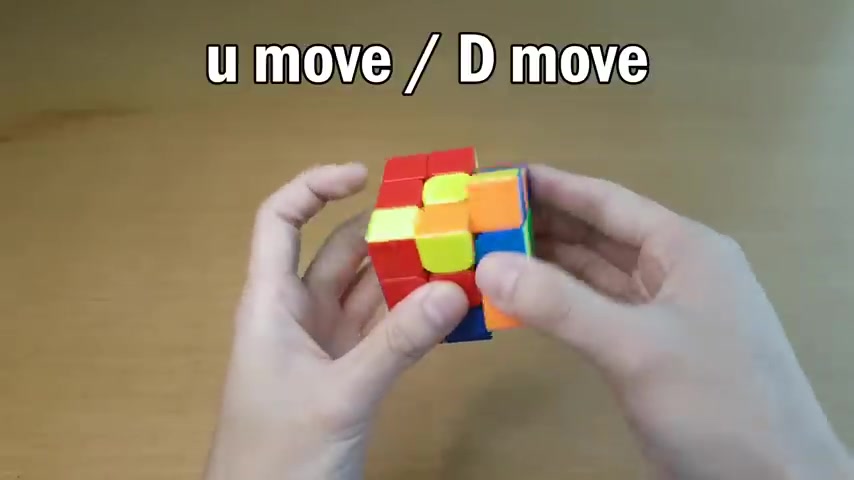
And if your look ahead is good enough , you can notice that these two are actually uh that's a bad edge .
So after solving this pair , we can correct the D layer with a wide U prime instead forcing this one into now a good edge case .
And so these are very advanced but pseudo slotting is advanced .
So these are the things to think about .
If you want pseudo slotting to be as optimal for you as possible , then there's the idea of a pseudo X cross .
So an X cross is when you solve the cross in a way that also solves an F two L pair .
Well , why do that when it's so restrictive ?
When instead sometimes solving the cross just gives you a corner and edge already solved .
Maybe you can even add some moves to force that .
But that's like a little bit more advanced .
Basically , if this happens , you can treat that like an X cross and then find the other pieces and pair them and solve them like it's a pseudo pair .
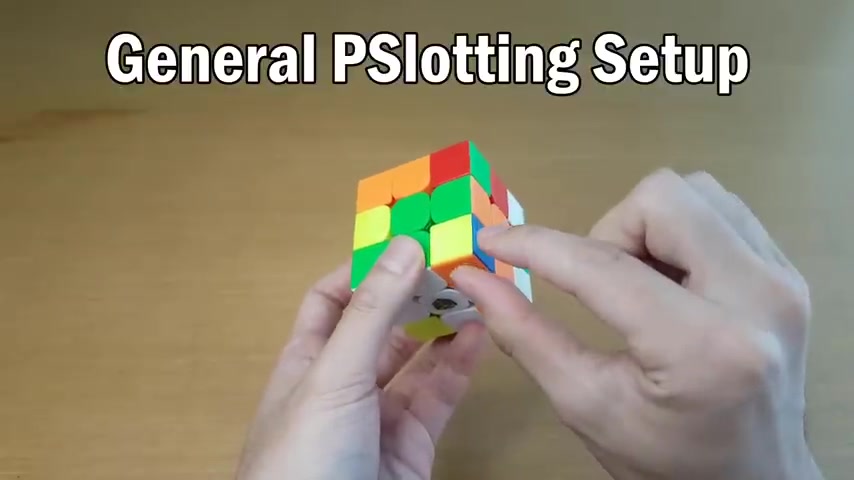
And now you have a two pairs solved after just doing one pair , which means you skipped a pair and just remember that any time you see a corner or an edge solved anywhere you can force a pseudo slot by solving a different piece like this corner with this edge , then you just need to solve this corner with this edge .
Just make sure your recognition is good enough that it's not terrible cases like this .
Also , I just want to say that a lot of people think pseudo slotting is like a relatively new thing .
Um Actually near the beginning of making my channel , I actually had a video that did talk about pseudo slotting .
But I think maybe why people didn't really notice was because back then the name wasn't as catchy as something like pseudo slotting .
Anyway , if you're curious , I'll link that in the description .
Are you looking for a way to reach a wider audience and get more views on your videos?
Our innovative video to text transcribing service can help you do just that.
We provide accurate transcriptions of your videos along with visual content that will help you attract new viewers and keep them engaged. Plus, our data analytics and ad campaign tools can help you monetize your content and maximize your revenue.
Let's partner up and take your video content to the next level!
Contact us today to learn more.